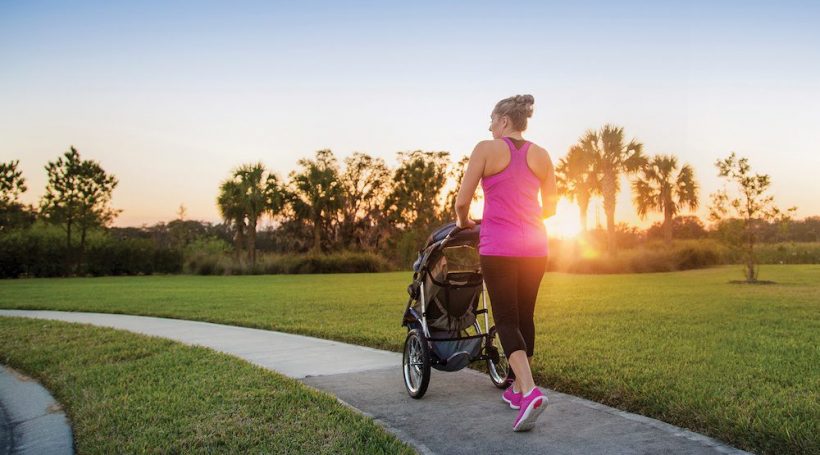After giving birth to her second child, Jennifer Kreatsoulas was taking time off from work when the eating disorder she thought she had tamed in college came back – and once again it took over her life.
What started as daily walks with the children turned into an unhealthy, 2-hour-a-day obsession to make the excursions increasingly difficult. Then came a beautiful spring day in a park with her family. She felt so physically exhausted that she could no longer push the baby stroller.
“It wasn’t about my babies, but inside of me was a sense of being overwhelmed,” says Kreatsoulas, who underwent treatment at the Renfrew Center for Eating Disorders.
Although something she never expected or had hoped to deal with again, Kreatsoulas recognizes now that her relapse, which was tied to post-partum depression, is not unique.
The typical picture of someone suffering an eating disorder is a teenage girl. In reality, the obsessive need to control one’s weight or shape through extreme efforts can emerge – or reemerge – at any age and hits both sexes. It’s becoming more prevalent among older women.
“While there’s not a lot of data for the older age group in general, there does seem to be an increase in adult eating disorders since about 2000,” notes Charlotte Markey, PhD, a psychology professor at Rutgers University-Camden who studies eating behavior and body image.
At the Renfrew Center, which runs a Midlife Program in Mt. Laurel, the number of women over 35 who have sought its services has increased by 42 percent in the past decade. Moreover, it’s estimated that 13 percent of women over the age of 50 are living with an eating disorder, according to the National Association of Anorexia Nervosa and Related Disorders (ANAD).
Experts suspect that even more older women are suffering but are undiagnosed or unaware. Symptoms of anorexia are sometimes attributed to the normal aging process or another medical condition, says Andrea Cochran, a psychiatric nurse practitioner with Jefferson Behavioral Health in Voorhees. And that’s dangerous. While the consequences can be life-threatening at any age, time adds complications.
“The physical consequences that result are particularly dangerous later in life because our bodies cannot sustain the same levels of physical strain as they could when we were younger,” she says.
Taken to extreme, an eating disorder can affect every organ system in the body – from cardiovascular and gastrointestinal to musculoskeletal and neurological. It also carries the highest death rate compared to other mental disorders, according to the National Institute of Mental Health. But just like teens and young adults, older people in the grips of such disorders can appear healthy.
For Kreatsoulas, her relapse seemed very different at first from the way she experienced anorexia during college. A student athlete, her issues were tied to a history of exercise addiction, she says. This time around, long walks with the children during her maternity leave seemed like a healthy outlet. With the newborn strapped to her chest, she would push the stroller.
“It was a way to move that energy of overwhelm,” she says. “But because the eating disorder was taking hold again, I was hearing a lot of the same thoughts and being motivated in the same ways in the past: find the hilliest road to walk, push the stroller, carry the baby, make it hard.”
In adults, eating disorders can be a continuation of a mental-health problem experienced earlier in life that went undiagnosed. But even if it was successfully treated in the past, it can reemerge at a time of extreme stress. The rarest form is when it develops for the first time later in life, Cochran says.
Those new to the diagnosis in adulthood face many of the same struggles as teen sufferers. The triggers can include body image issues and fear of food, which can be exacerbated by aging.
“We live in a culture that values fitness and appearance,” Markey says. “It’s not like when you turn a certain age you become immune to all of that.”
Other stressors are more unique to older adults, including the loss of a loved one, relationship issues as well as the stresses of caring for aging parents or children (and often both at the same time), empty-nest syndrome, work or financial worries.
For women, entering menopause is also a spark due to the associated hormonal, physical and emotional changes, says Markey. And there’s the natural, but unavoidable, process of aging.
“As we age, we start to look less like the beauty ideals we’ve been used to seeing. For many people, that can be really challenging,” she adds.
Eating disorders don’t go away on their own, no matter your age. When you’re younger, it’s more likely that a parent, teacher or friend may call attention to the problem. For older women, there’s the invisibility factor: there are fewer people prying into your life.
Under the radar, older women suffering from an eating disorder are often reluctant to seek help, both due to the social stigma of admitting to mental health problems and feelings of guilt about how this will affect their family, Cochran says.
Treatment generally involves a combination of psychological and nutritional counseling. The course will be different for everyone and based on many factors, including the patient’s age, stage of illness, type and severity, and underlying causes.
For Kreatsoulas, the moment she was too exhausted to participate in family life was a true awakening.
“It was that moment in the park when I said to myself: ‘This is not fair to my family. This is not the mother I want to be or the woman I want to be,’” she says.
Following her successful treatment, she was ready for a radical transformation. She quit her job as a medical writer and returned to one she held prior to having kids: yoga instructor. As a certified yoga therapist, her business caters to people in recovery and focuses on using the body as a source of strength.
“Every time someone shows up to support themselves in treatment,” she says, “we help break the stereotype that this disease only affects a certain age, a certain skin color, a certain sex.”














